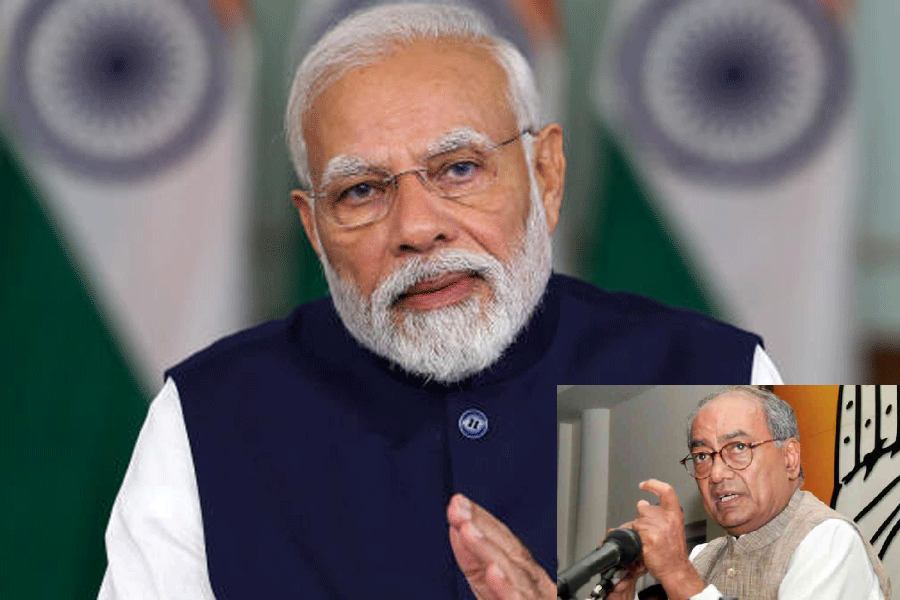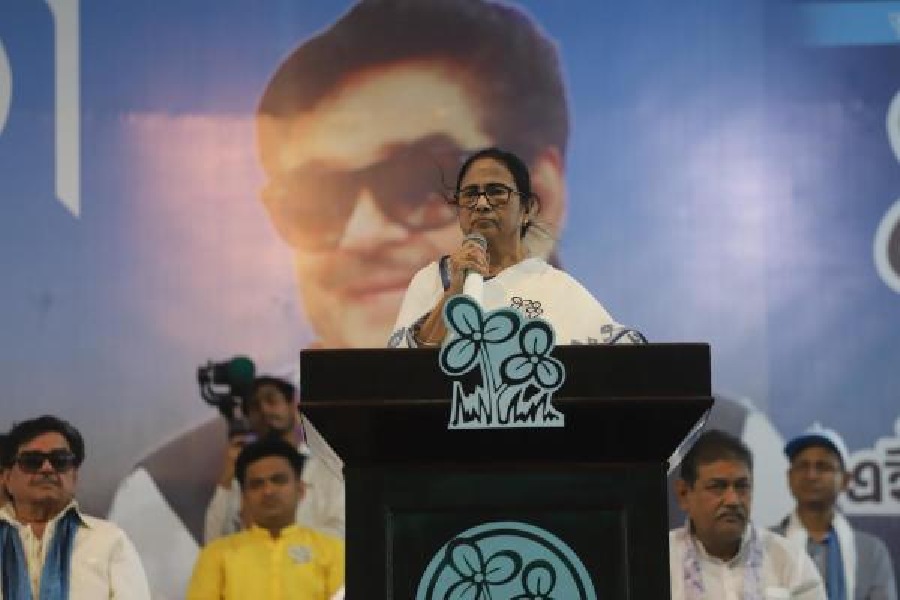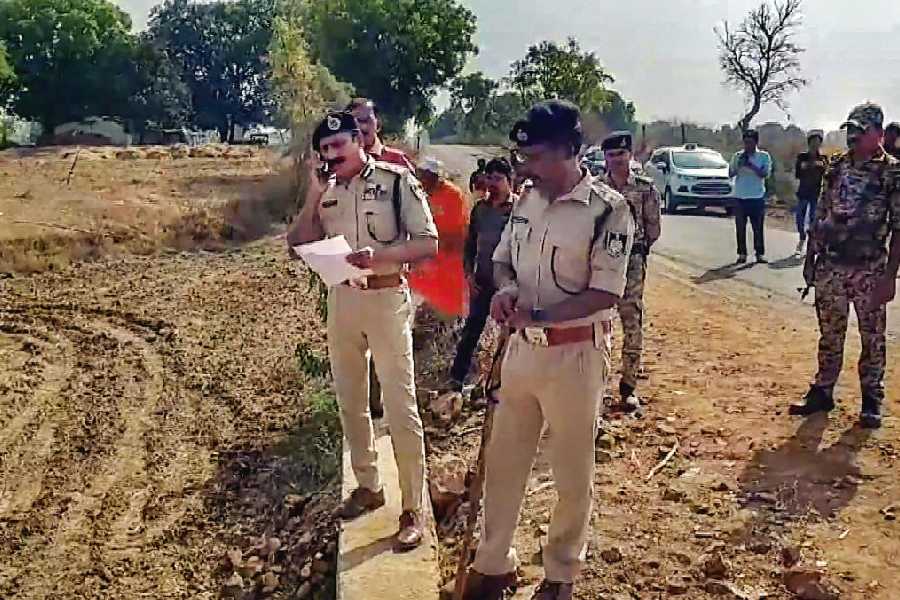WANDERER
After years of a vacation-once-a-year corporate existence, the feeling that I was missing out on life was getting so strong that I had to do something about it. A sabbatical seemed to be in order. So, I counted my savings, quit my job, packed my bags and took off — to South America. It turned out to be my best decision in a long time.
To me, this continent looked the most exciting. Not too many people — and even fewer solo female wanderers — from India head that way. And of the nine countries I travelled to over eight months, Peru stood out for the range of experiences it offered.
Geographically, it isn’t a very big country, about a third of India’s size. But Peru packs in phenomenal variety — beautiful beaches with amazing sea life, high mountains, lakes, evergreen rainforests, volcanoes, deserts, you name it. Plus, there is aboriginal and tribal life, ancient history as well as legacies of the native Incas and Spanish colonialists.
A ride in a small bus from the Bolivian capital of La Paz — with a short bit on the ferry on Lake Titicaca — got me to Copacabana, from where a bigger bus was to take me to Puno in Peru. The border crossing, at Yunguyo on the edge of the lake, was interesting. Leave your stuff in the bus, walk to the Bolivian embassy, get the exit stamp on the passport, walk to the Peruvian embassy next door, get the entry stamp, board the same bus and carry on. Three-and-a-half hours later we were in Puno, a 17th century city built by the Spanish in the southeastern part of the country.

The Uros Islands on Lake Titicaca are man-made from totora reeds. (Moumita Das Roy)
TAKING IN THE TITICACA
My next couple of days would be centred around the blue waters of the Titicaca, the largest lake in South America up in the Andean altiplano (tableland) with a surface elevation of more than 3,800 metres. It’s the highest navigable lake in the world.
And it is here that one finds the surreal floating islands of Uros, which are made entirely of totora reeds. A 5km-or-so boat ride from Puno gets you to this archipelago of about 120 man-made islands, each with five to 10 families living on it. Walking on the islands gives the squishy feel of stepping on a giant sponge. The inhabitants of these islands are the Urus and Aymaras, who are pre-Inca natives of Peru and Bolivia. The inhabitants thrive mostly on tourism now, apart from some fishing. We exchanged greetings in Aymara — the language of the Aymara Andeans — and Spanish, while the ‘leader’ of the island showed me around.
After a few hours of amazement, it was time to bid goodbye to this literally floating population. I hopped on to the steamer for Island Taquille that’s further into the lake. The island is home to the Aymara people, who are master textile makers. A trudge of 567 steps took me up to the centre of this island, at an altitude of over 4,000m, for a wholesome Peruvian lunch of potatoes, quinoa and chicken. The views of the lake from this elevation are just fantastic and give an idea of how vast it actually is. Apart from the near shoreline, it extends to the horizon in pretty much every direction. This feeling of awe is something I would enjoy often enough during my sojourn in this country.
I stayed the night with the locals in a cosy homestay in the Luquina Chico community in the Chucuito peninsula back on the mainland. It is much less touristy here than the islands. I was greeted by brightly dressed locals with music and fanfare. My fellow travellers joined in a game of football and were soon beaten hollow by the locals who are used to exerting themselves at those altitudes.
The following day, I just walked around the place and to soak in the ambience also tried my hand at digging up potatoes with the locals, even though I wasn’t too adept at it. Getting to know the local people to the extent that my broken Spanish would allow and sharing dinner gave me a feeling of being one of them, even if it was for a night.
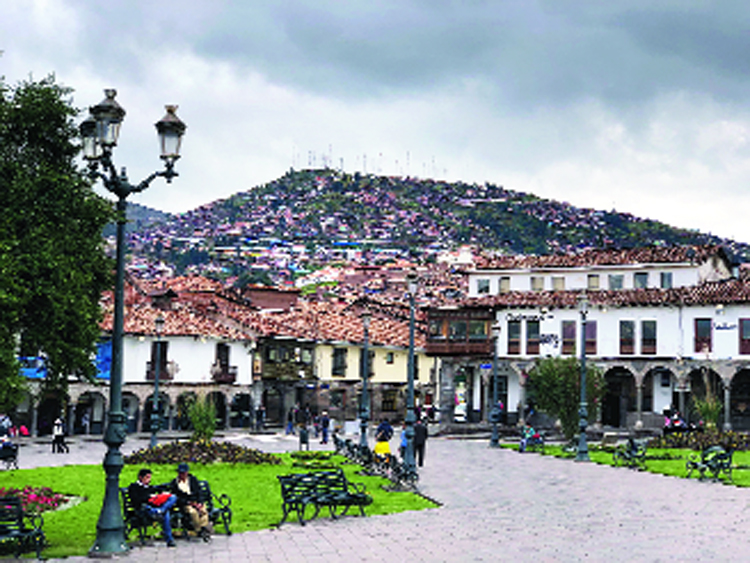
Plaza de Armas de Cusco is a good place for people-watching. (Moumita Das Roy)
CUSCO CURIOSITY
An eight-hour bus ride the next day got me to Cusco. This is possibly the most interesting city in Peru and the gateway to many must-visit destinations. The city itself is an amazing amalgamation of Spanish colonial architecture and the glorious relics of the Incas. And there’s so much you can do there. I spent hours just sitting in the main square — Plaza de Armas de Cusco — watching the melange of locals and tourists.
This is one of the best places to shop for souvenirs. There are large markets and plenty of opportunity to put our home-grown bargaining skills to use. I had a very funny conversation with a local sitting on the plaza bench. A middle-aged man wanted to know where I was from. I had made it a point, whenever I was asked this question, I would first let people guess.
“Morocco,” he said and looked at me quizzically.
I laughed and told him I was from India.
“Solita (alone)!” he couldn’t hide his surprise. And then on he went, “Namaste, Modi, Modi, Shah Rukh Khan.” It was now my turn to be surprised at how our way of greeting, the name of the prime minister and Bollywood had become part of easy vocabulary for someone at the opposite end of the globe!
COLOUR OVERLOAD
The fairy tale Vinicunca, or Rainbow Mountains, or Montana de Siete Colores (Mountain of Seven Colours), is a day trip from Cusco, but a day that begins very early, at three in the morning. To get to the trailhead, I crossed the beautiful valley dotted with alpaca herds. After which is a nearly two-hour, high-altitude hike. But I saw colours in a mountain like I had never seen before. Reds and greens and yellows and purples from different minerals striped the range in vertical layers. It was one of the grandest spectacles I had set my eyes upon. It was my birthday, and even if I wasn’t over the rainbow, I was at least standing in the middle of it. There was no better gift I could have given myself.
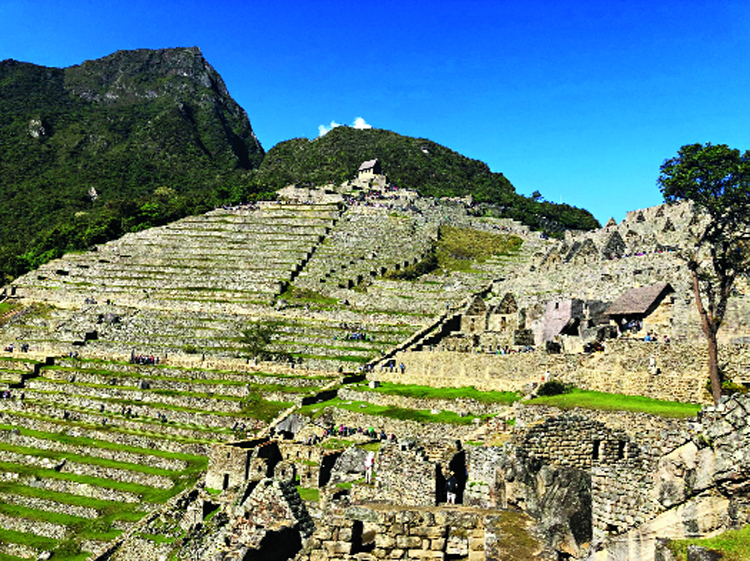
Stairway to the temples of Machu Picchu high up in the Andes. (Moumita Das Roy)
PILGRIM’S PROGRESS
There are many ways to get to the ancient Inca citadel of Machu Picchu. You can take one of the trails that takes two to five days to walk, or the beautiful glass-ceiling train from either Cusco (Poroy) or Aguas Calientes. Machu Picchu was the high point of Peru for me. It was my pilgrimage. In sheer scale, the ruins surpassed anything I could have imagined and a clear blue sky just added to the experience. I climbed up and down the steep stairs to visit the temples, fascinated by the tales of the ancient Inca. I walked to the rickety Inca Bridge through a dangerous, narrow pathway looking down upon deep gorges, where one careless step would take you down never to be found again. On my way back I got the postcard picture of the Machu Picchu ruins in its full glory against the backdrop of the Huayna Picchu peak (picchu, pronounced pikchu is mountain in native Quechua). At the exit, I got my passport stamped with the symbolic Machu Picchu, ticking off a visit to one of the ‘new’ seven wonders of the world!
CALLING ON COLCA
In Arequipa, I was pleasantly surprised to find a restaurant owned and run by a Bengali chef! After months of steak, potatoes and self-cooking in hostels, the template Bangali in me couldn’t resist the biryani. It was a taste of home and a sheer delight! The next day I visited the impressive Colca Canyon — one of the deepest in the world. It’s hard to believe that the ribbon-like river that flowed way down below had, over millennia, carved out this fantastic canyon and was deepening it as we watched.
The other attraction there was, of course, the majestic Andean condors soaring over the giant gorge. The condor is a national symbol of many South American countries and plays an important role in the folklore and mythology of the Andes. I also spotted herds of the three different species of camelids — alpaca, llama and vicuna. The last, I was told, produces the most expensive wool in the world and every piece of garment made of it comes with an authentication certificate!
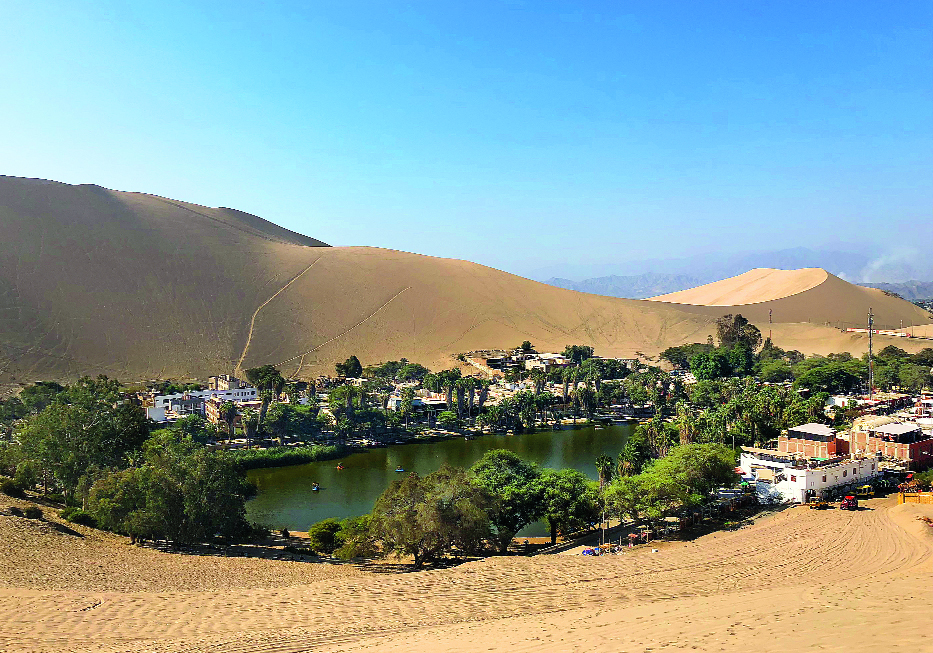
Huacachina in the Ica desert is almost the perfect oasis. (Moumita Das Roy)
EARTHY ETCHINGS
I continued travelling northwards to Nazca to see one of the world’s greatest archaeological mysteries: the Nazca Lines — a group of very large geoglyphs formed by shallow incisions in the soil made to expose the sand below the dark top crust. These are believed to predate the Inca civilisation but remain as they are! Most lines run straight but there are figurative designs of animals and plants too. There are many theories about how they were created but I would like to continue believing it to be a mystery. The best views are from the sky aboard a light aircraft that can be easily hired.
Before heading for the Peruvian Amazon and on my way up to the clamouring metropolis of Lima, I made two more stops. The first one was to explore the desert of Ica. After a dune-buggy ride in the desert, I tried the favourite local sport of sand-boarding by the Huacachina oasis.
The second stop was Paracas, a quaint little peninsula coast town by the Atlantic Ocean. A 30-minute boat ride away is the Ballestas Islands where one can experience the sea-life haven of Peru. A small group of rocky islands which you can only circle in your boat is home to playful sea lions, Humboldt penguins, boobies, pelicans, and more than 200 types of sea birds.
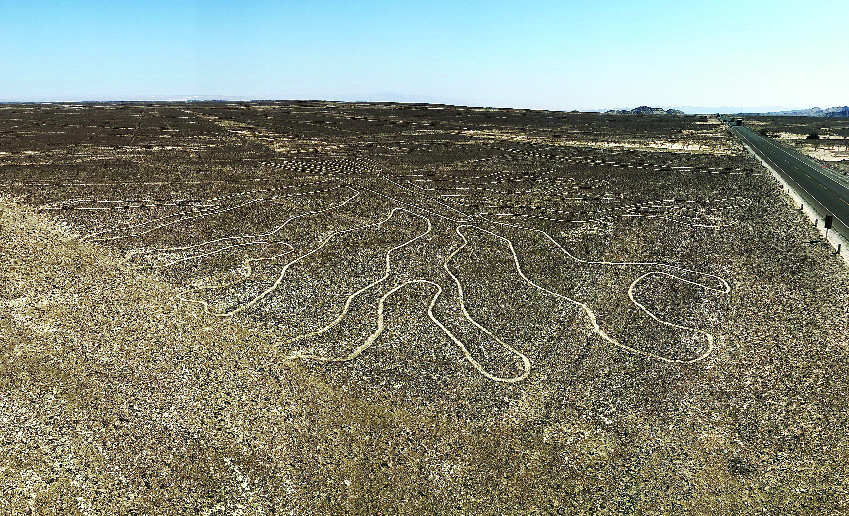
Till date nobody has figured out who created the Nazca Lines, or why (Moumita Das Roy)
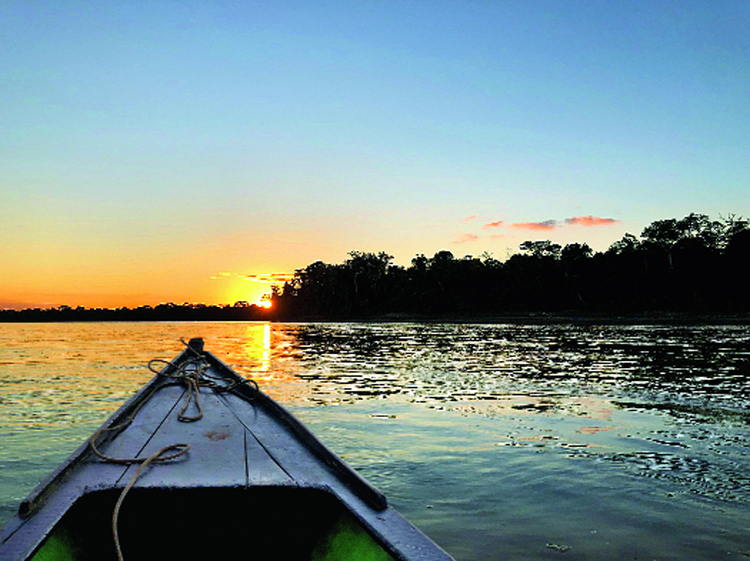
The sunset looks spectacular from a boat on the Madre de Dios river (Moumita Das Roy)
INTO THE EVERGREEN
I entered Peruvian Amazon from Puerto Maldonado, to Tambopata forest — one of the easier to access regions of the Amazonian rainforests. An excursion boat on the Madre de Dios river took me to a lodge in the middle of the forest where I stayed for four nights. The Tambopata National Reserve is incredibly biodiverse with 1,000 species of butterflies, 100 species of mammals, around 600 species of birds and hundreds of species of trees and plants.
In the mornings I would go for hikes along the jungle trail with the local guide to see animals and birds. I got lucky with howler monkeys, spider and squirrel monkeys, macaws, toucans and hundreds of turtles lazing around on the banks of the river. Even in broad daylight, little sunlight managed to seep in through the ancient giant trees that tower all around.
I got one of the best views of the forest from a tree-top platform that I reached after crossing a wobbly, 90m-long suspension bridge. It is the highest tree platform in South America, located 45m up in the crown of a Kapok tree. Then, on a moonlit night I went on the boat to look for caimans and capybaras. Caiman meat is very tasty, the locals said, though I was not lucky enough to taste it.
But I did turn the tables on another species, piranha, fresh from the Sandoval oxbow lake and roasted over an open fire. A few brave fellow travellers also took a swim in the lake but managed to come back ashore intact. I am a sunset chaser and the one on the river seen from a rickety boat was truly an unforgettable sight!
No travel story is ever complete without tales of the local food. Mine won’t be either. Peru was a gastronomic delight. I fell in love with ceviche, which is almost Peru’s national dish. A sea bass soup with lime and chilli flavouring will tickle your taste buds and you also cannot say no to the Lomo Saltado (stir-fried beef) or Aji de Gallina (chicken shreds in a thick yellow salsa). I tried alpaca meat, found it a little rough for my taste, but I stopped myself from trying the cuy, or guinea pig, which is the Andean region’s most popular meat. I couldn’t possibly eat a pet! The national cocktail of Peru, Pisco Sour, a citrusy mix with the base liquor of pisco, is a must-try too.
I had been a month in Peru and there was much I still hadn’t seen. I couldn’t explore the coast properly or go to Iquitos, which was deeper in the Amazon and not accessible by road, or visit Cordillera Blanca, the tropical ice-covered mountain range of Peru. Maybe next time, when I am back, younger and braver!
The author is a genuinely curious type and jet-fuel addict who often suffers from far-sickness. Visit her at `www.traveltorebound.com` or write to mo@traveltorebound.com


